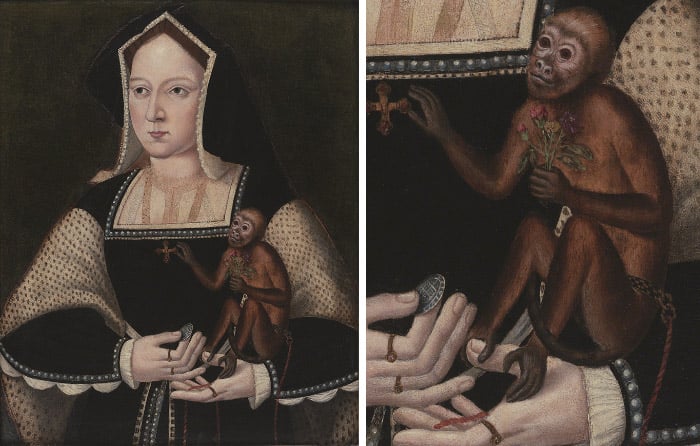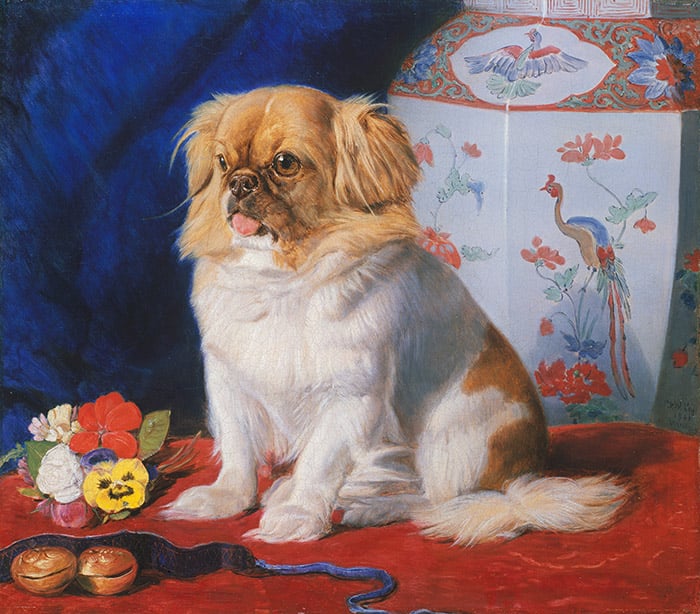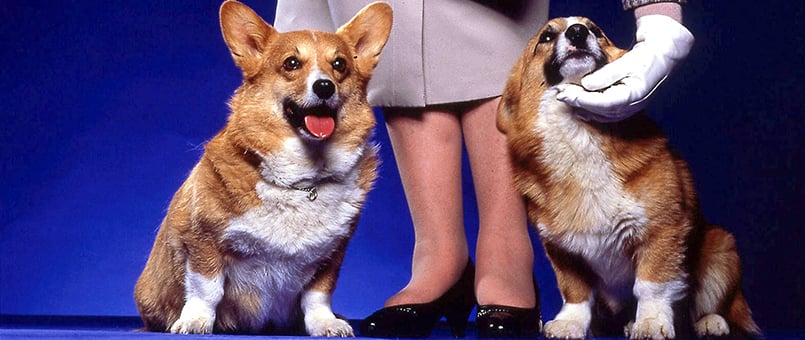
Royal Pets: not only Corgis
Over the years the British Royal Family have embraced dogs – most notably corgis – as their favoured pets but it has not always been so. See how animals have been immortalized in family portraits in royal households through the ages.
The Tudors
Animals as pets were considered a great luxury during the 16th century. The royal family were known to house many, including exotic animals typically given as gifts to the monarch. Many Tudor families owned dogs. Greyhounds had symbolic value, as an occasional element of the Tudor Coat of Arms alongside the Tudor Rose, in addition to being great hunting partners.
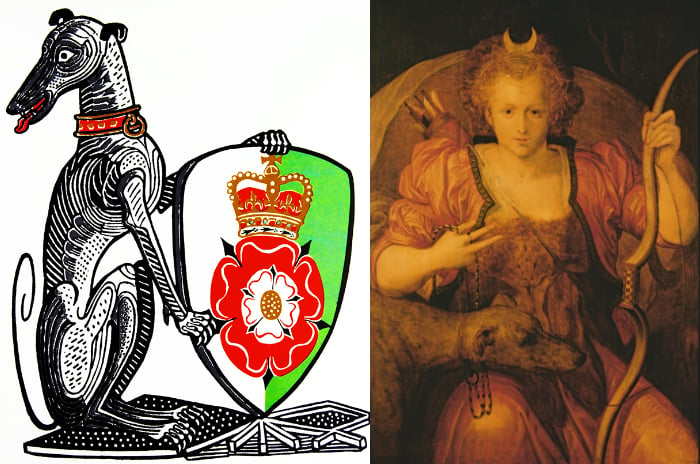
Left: The White Greyhound of Richmond. one of ‘The Queen’s Beasts’, 1953 by Edward Bawden / UIG
Right: Elizabeth I as Diana the Huntress, c.1560 (oil on canvas), Frans Floris / Hatfield House, Hertfordshire
Dogs were sought after not only as companions but also to attract fleas away from their owners, and in the case of small lapdogs, keep ladies’ legs warm during carriage rides.
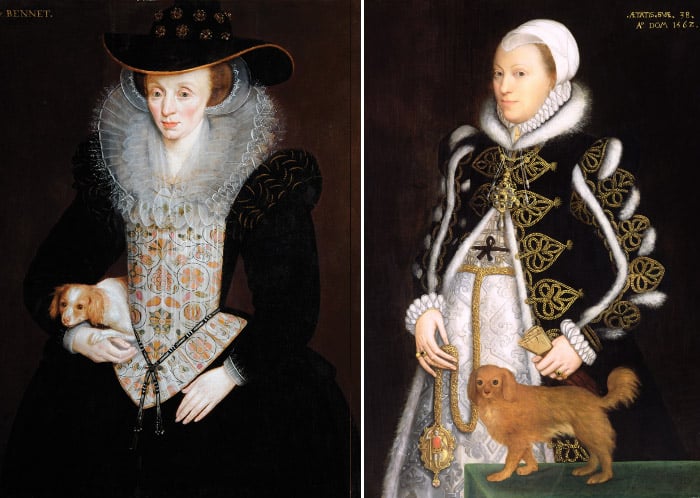
Left: Lady Bennet, Hieronymus Custodis / Leeds Museums and Galleries
Right: Portrait of a Woman, probably Catherine Carey, Lady Knollys Steven van der Meulen / Yale Center for British Art, Paul Mellon Collection, USA
Of the more peculiar pets, many portraits depict monkeys (most notably the painting of Catherine of Aragon, below). Monkeys were kept not only for affection but to train dogs for bear and bull baiting, a royal passion. Many portrait artists of the times placed animals into paintings as visual clues into the personality of the sitter. Monkeys were known to symbolize foolishness (although in Catherine’s case that symbology might not be appropriate), whereas squirrels conveyed obedience and dogs symbolized fidelity.
The Victorian Era
Perhaps the royal most associated with having a love for animals is England’s Queen Victoria.
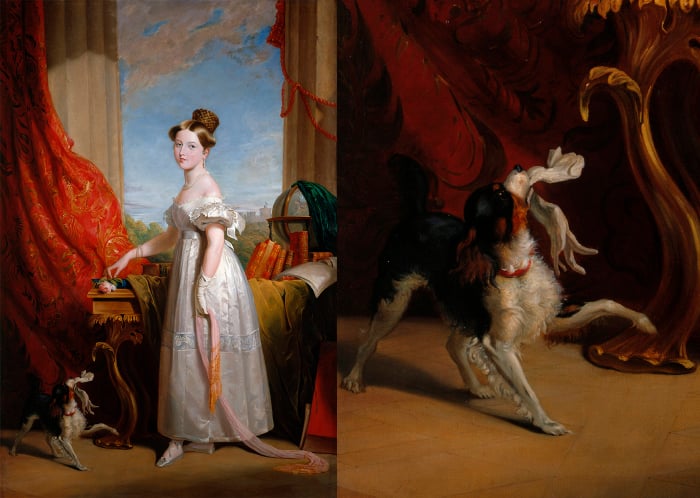
Queen Victoria when princess, c.1866-70, Sir George Hayter / Royal Collection Trust © Her Majesty Queen Elizabeth II, 2015 and detail
When she was 14, Princess Victoria was given a Cavalier King Charles Spaniel, whom she named Dash. The portrait of her prized pet (below left) was commissioned by Victoria’s mother for her seventeenth birthday.
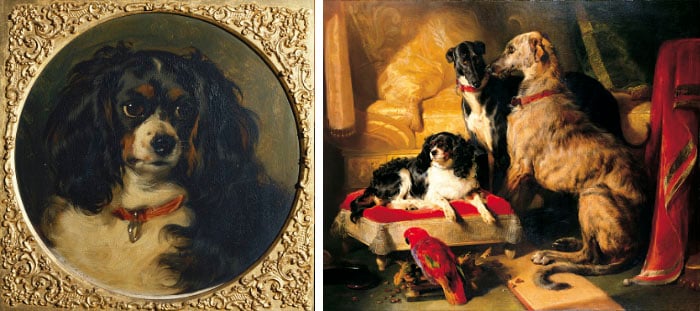
Left: Dash, 1836 Edwin Landseer, Royal Collection Trust © Her Majesty Queen Elizabeth II, 2017
Right: Hector, Nero and Dash with the parrot, Lory, 1838 by Edwin Landseer, Royal Collection Trust © Her Majesty Queen Elizabeth II, 2017
It is said that when Victoria first met Albert, his behaviour towards Dash endeared her towards her future husband. Queen Victoria and Prince Albert surrounded themselves with a menagerie of pets.
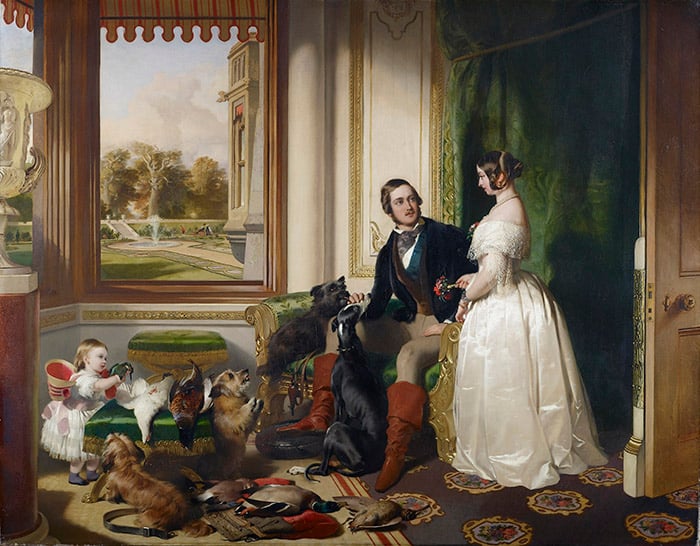
Windsor Castle in modern time; Queen Victoria, Prince Albert and Victoria, Princess Royal, Sir Edwin Landseer / Royal Collection Trust © Her Majesty Queen Elizabeth II, 2015
The Royal Collection has a wonderful selection of images of the family’s dogs and birds, many painted by Sir Edwin Landseer, including one of Princess Victoria with Albert’s favourite greyhound and a funny scene of a macaw and a pair of love-birds toying with two spaniels, Islay and Tilco.
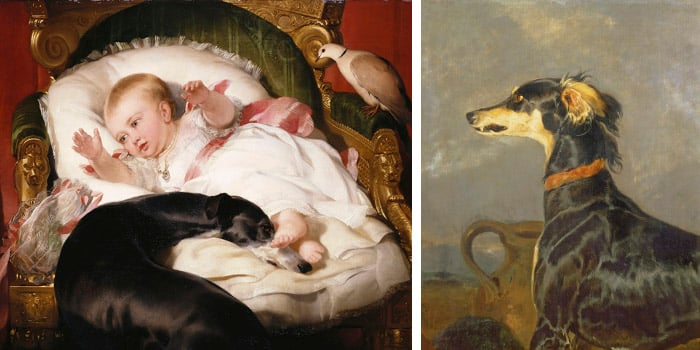
Left: Victoria, Princess Royal, with Eos, 1841 by Edwin Landseer, Royal Collection Trust © Her Majesty Queen Elizabeth II, 2017
Right: Queen Victoria’s Favourite Dog, Eos, Sir Edwin Landseer / © Towneley Hall Art Gallery and Museum, Burnley, Lancashire
Queen Victoria adored Islay, training him to beg for bits of food, which he skilfully demonstrates in this portrait. Both Islay and Dash are buried at Adelaide Cottage, Windsor Castle.
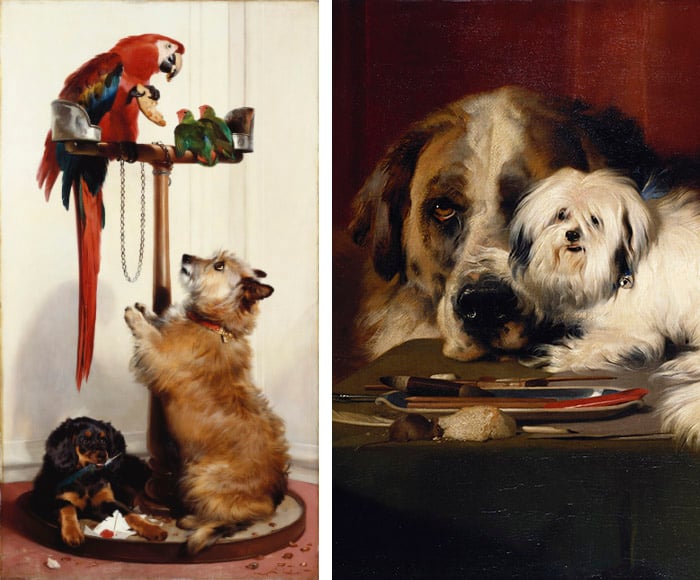
Left: Islay, Tilco, a macaw and two love-birds, 1839, Sir Edwin Landseer / Royal Collection Trust © Her Majesty Queen Elizabeth II, 2017
Right: Quiz, 1839, Sir Edwin Landseer / Royal Collection Trust © Her Majesty Queen Elizabeth II, 2017
Below a portrait of Looty, a Pekinese Lion dog. The little dog had been found by Captain John Hart Dunne of the 99th Regiment after the Summer Palace near Beijing (Peking, as it was then known) had been looted on 8 October 1860. When he returned to England he presented it to Queen Victoria for ‘the Royal Collection of dogs’. Looty was considered ‘the smallest and by far the most beautiful little animal that has appeared in this country’. When Keyl was asked to sketch Looty he was told he ‘must put something to show its size it is remarkably small’. A replica of this picture was painted for Captain Dunne.
Although dog paintings were not unusual, Victoria’s love of dogs and her particular influence increased the popularity of both pet portraits and dog ownership tremendously during the 19th century. Wealthy and fashionable women owned dogs, lapdogs or ‘toys’ in particular, and took them everywhere. Many dogs lived as lavishly as their owners, some getting up to five thorough brushes and grooming sessions everyday, not to mention sleeping on satin cushions and even having access to a specially trained maid to dote on their every need. Among the most popular dog breeds during this time were Pomeranians, Yorkshire and Skye terriers (below), Cavalier King Charles spaniels and Japanese spaniels. Queen Victoria’s love for animals extended to her public service, in which she served as the first patron of the RSPCA, an organization established in 1824 to “prevent cruelty, promote kindness to and alleviate the suffering of animals.
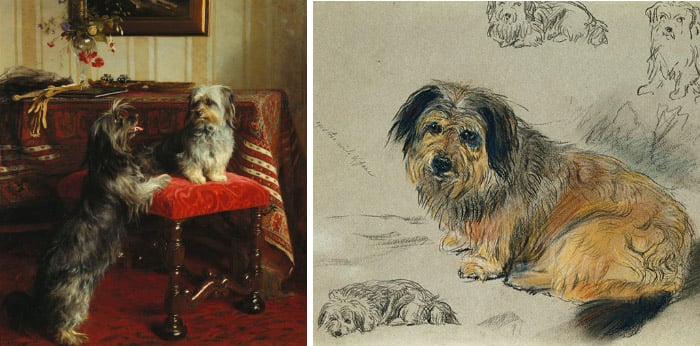
Left: Dot and Cairnach, Skye terriers, 1874, Otto Weber / Royal Collection Trust
Right: Boz, favourite Skye Terrier of the Duchess of Kent and afterwards the Queen, Friedrich Wilhelm Keyl, Both Royal Collection Trust © Her Majesty Queen Elizabeth II, 2017
The Windsors and Welsh Corgis
The Welsh Corgi and the House of Windsor have a very close relationship. Elizabeth’s love for the breed started when she was just 7 years old, when her father King George VI introduced a corgi named Dookie to the Royal Family in 1933. On her eighteenth birthday, Elizabeth received her very own corgi whom she named Susan.
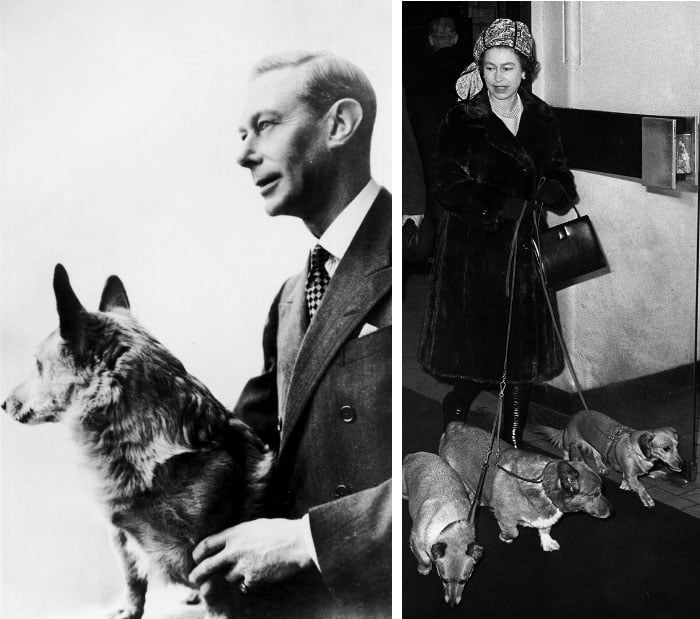
Left: His Late Majesty King George VI, postcard, printed by Raphael Tuck & Sons, 1952 / Prismatic Pictures
Right: Queen Elizabeth II with her dogs in 1965, Liverpool Street Station
The Queen has owned more than 30 corgis during her reign, and she also introduced a new breed known as the ‘dorgi’ which is a cross between a corgi and a dachshund. The Queen also raises and trains labradors and cocker spaniels. Elizabeth II has been a great supporter of animal causes and charities. She is Patron of over 30 animal charities and clubs, from the RSPCA and the Kennel Club to the Red Poll Cattle Society and the Labrador Retriever Club. In fact, many animal charities boast a long line of royal patronage, some going as far back as 150 years.

Left: Welsh Corgi, 1998, Irina Makoveeva /Gamborg Collection
Right: Two Welsh corgis standing guard in a cattle field by Edward Herbert Miner, National Geographic Creative
Find out More
Explore The Queen’s Art Collection and Queen Elizabeth’s life in pictures
Images and Licensing
Get in touch with the Bridgeman team on uksales@bridgemanimages.com
Save
Save
Save
Save

